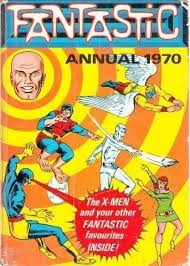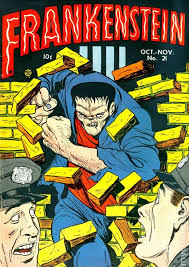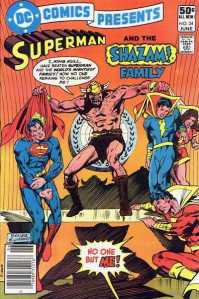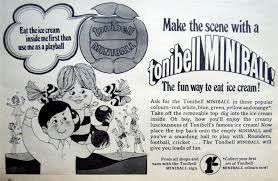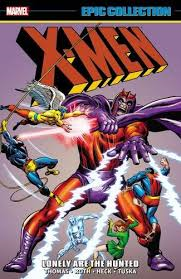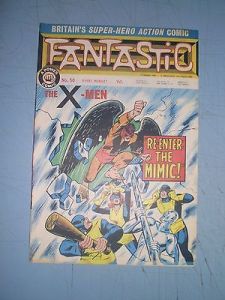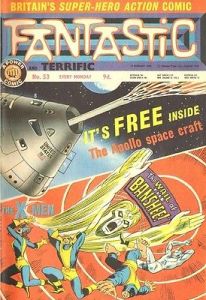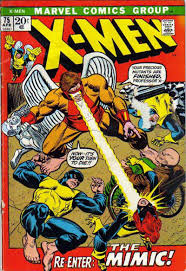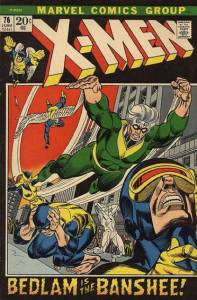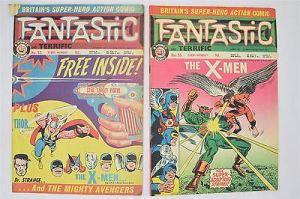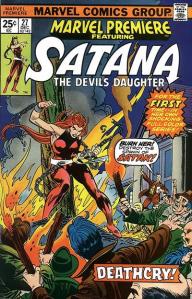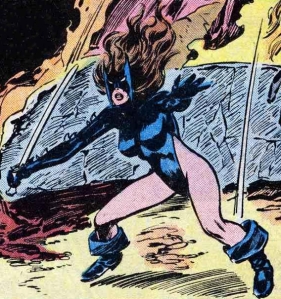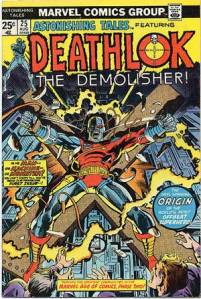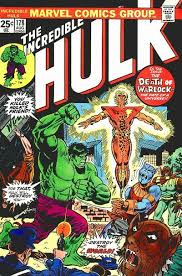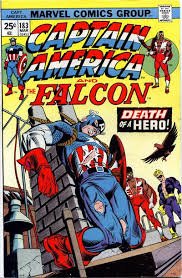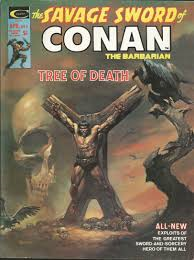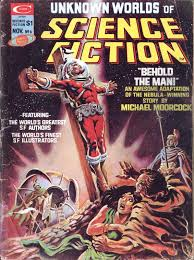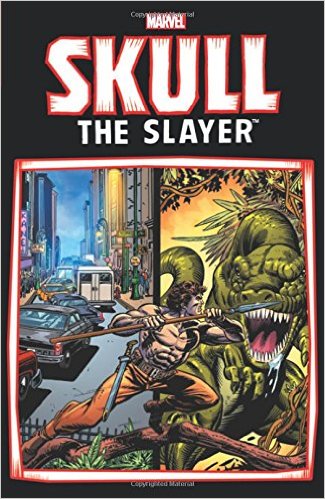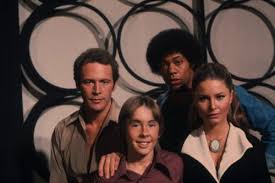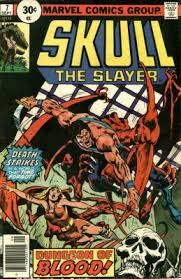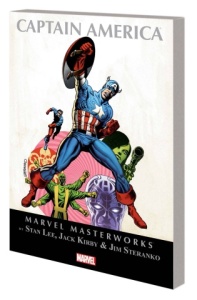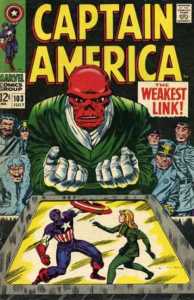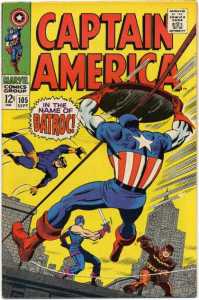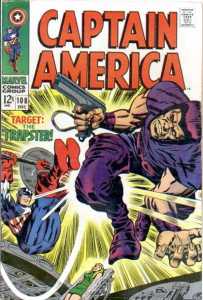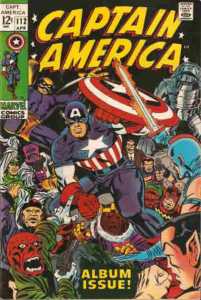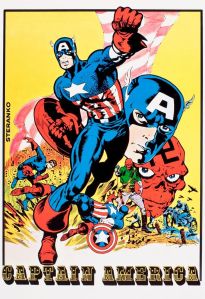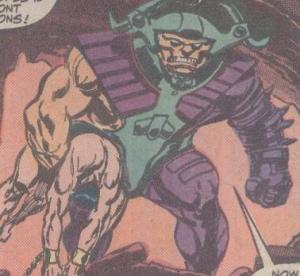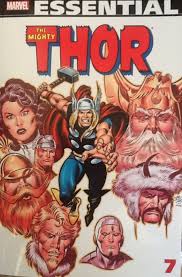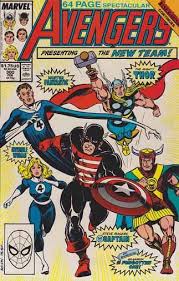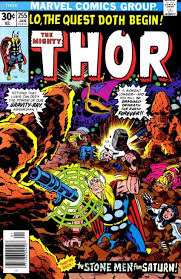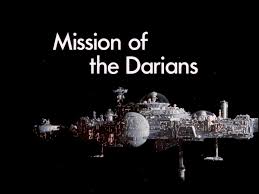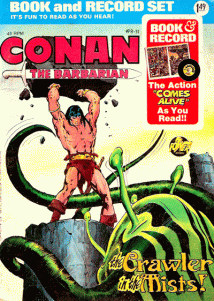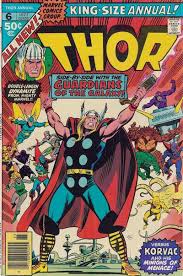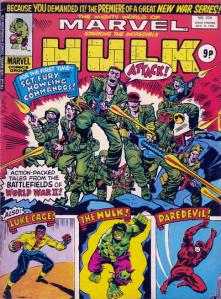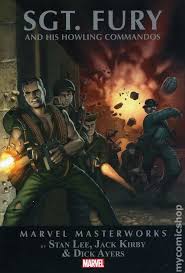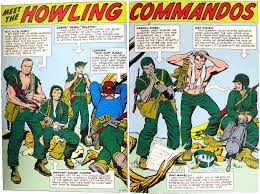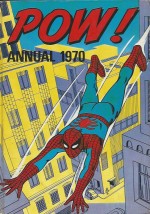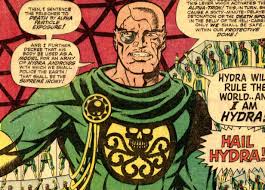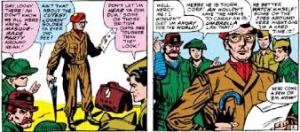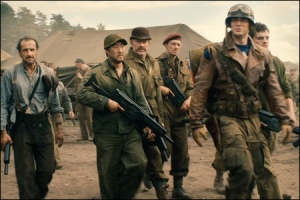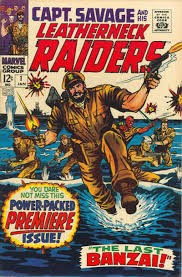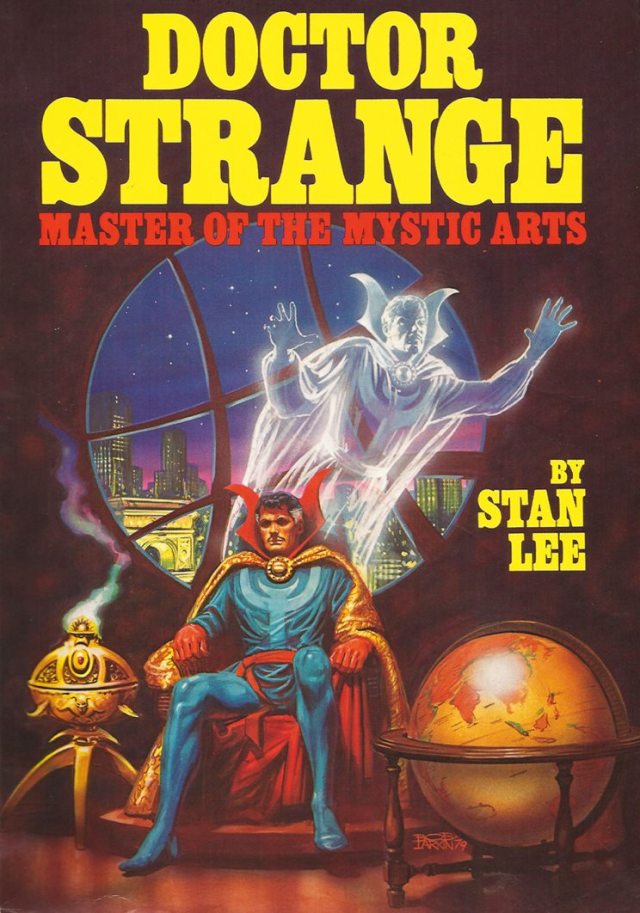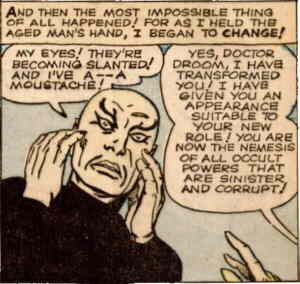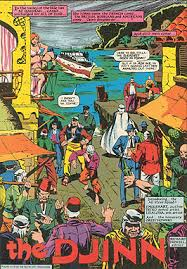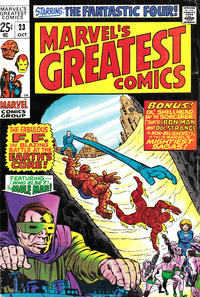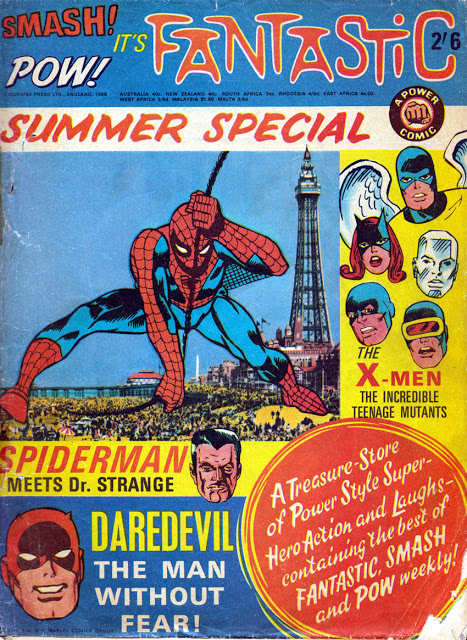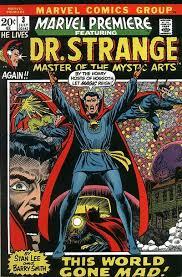Today’s post is a sequel of sorts to January’s “Journey of the Sorceror”. It looks at an East Ren library copy of Essential Doctor Strange. For convenience, I’ve split the stories collected within into three arcs.
The first, A Gathering of Fear includes episodes I previously read in Marvel UK’s heroic fantasy title, Valour. This weekly was a blend of Kirby’s Devil Dinosaur, late 70s Thor ( which we’ve looked at in a previous blog post ),late 70s Conan and the odd Wally Wood short from the late 60s.
The first stories follow up a Conway Thor storyline and reintroduces the Lovecraftian Dweller in Darkness, a shadowy colossus with facial tentacles, whose servants include “Shade Thralls” and the cloaked spook, D’spayre. Tom Sutton’s artwork has a grotesquely cartoony feel, reminiscent of early 70s-Strange but is replaced by classic Strange penciller, Gene “the Dean” Colan. Roger Stern is a writer whose work I find rather bland and workmanlike. This unmemorable batch of a half-dozen stories, like those Marvel Premiere tales by Roy Thomas, Archie Goodwin and Gardner Fox, seem to suggest that 30s Pulp Horror isn’t a successful milieu for Doctor Strange.
The subsequent Shadowqueen arc was written by Chris Claremont and it really piqued my interest in the pages of Valour. Claremont pits Strange against the N’Garai, his own brand of Lovercraftian Elder God, familiar from his stories of the X-Men and Dracula. Colan’s art looks fantastic but the stories are dreadfully verbose and fall flat in terms of emotion. Wong is given a heroic ancestry but the rebel leader of another dimension rejoices in the comical sobriquet Silver Fox. Mordo is re-positioned as the major antagonist of the series and Claremont introduces a new love interest in the form of old flame Madeleine St. Germaine. He also introduces Sara Wolfe, Strange’s business manager. She is of Native American ethnicity because , y’know, Claremont loved the patronising “Noble Savage” trope. Despite a crossover with his Man-Thing stories, somewhat to my surprise, I found Claremont’s idiosyncrasies failed to entertain in this arc, although Colan’s work might now lead me to try Night Force again.
The most enjoyable stories in the book comprise the This Menace Reborn arc, which introduces the art of Marshall Rogers. His employment of graphic effects and panel arrangements is playful and exhilarating, reminiscent of Steranko. Stern returns as scripter and his stories are more “super-heroic” than Claremont’s moody monologues. Guest-stars in this arc range from Brother Voodoo, the 1960s Fantastic Four and Sgt. Fury, in an exciting, anniversary time-travel story with more than a hint of Aleister Crowley. Guest artist Michael Golden makes the DeMatteis Defenders of the early 80s look tremendous.
As Clea, Strange’s lover/apprentice, is finally written out- the writing is on the wall from the very beginning of this collection- Stern introduces yet another romantic interest: Morgana Blessing, whose love for Strange has survived through all her reincarnations. This love story is cleverly linked to the FF’s classic adventure with Rama-Tut ( and later, Englehart will add further layers of complexity by involving the West Coast Avengers and Khonshu, Moon Knight’s patron). Paul Smith provides the final story in this Essential volume. His stylish and clean art is less detailed and exaggerated than Rogers and “A Mystic Reborn” also reintroduces Kaecillius, the villain of the 2016 Dr. Strange movie. He’s the Great Gambonno lookalike, who was a servant of Baron Mordo in the Sixties.
Given the tiresome verbiage of Claremont and the blandness of Stern, this book is not really “Essential”, in comparison with the Fireside Dr. Strange collection. The notable exception is of course the Marshall Rogers run. He really seems like the natural heir to Ditko.
Coming soon: Superman 1987
All images are presumed copyright of their respective owners






